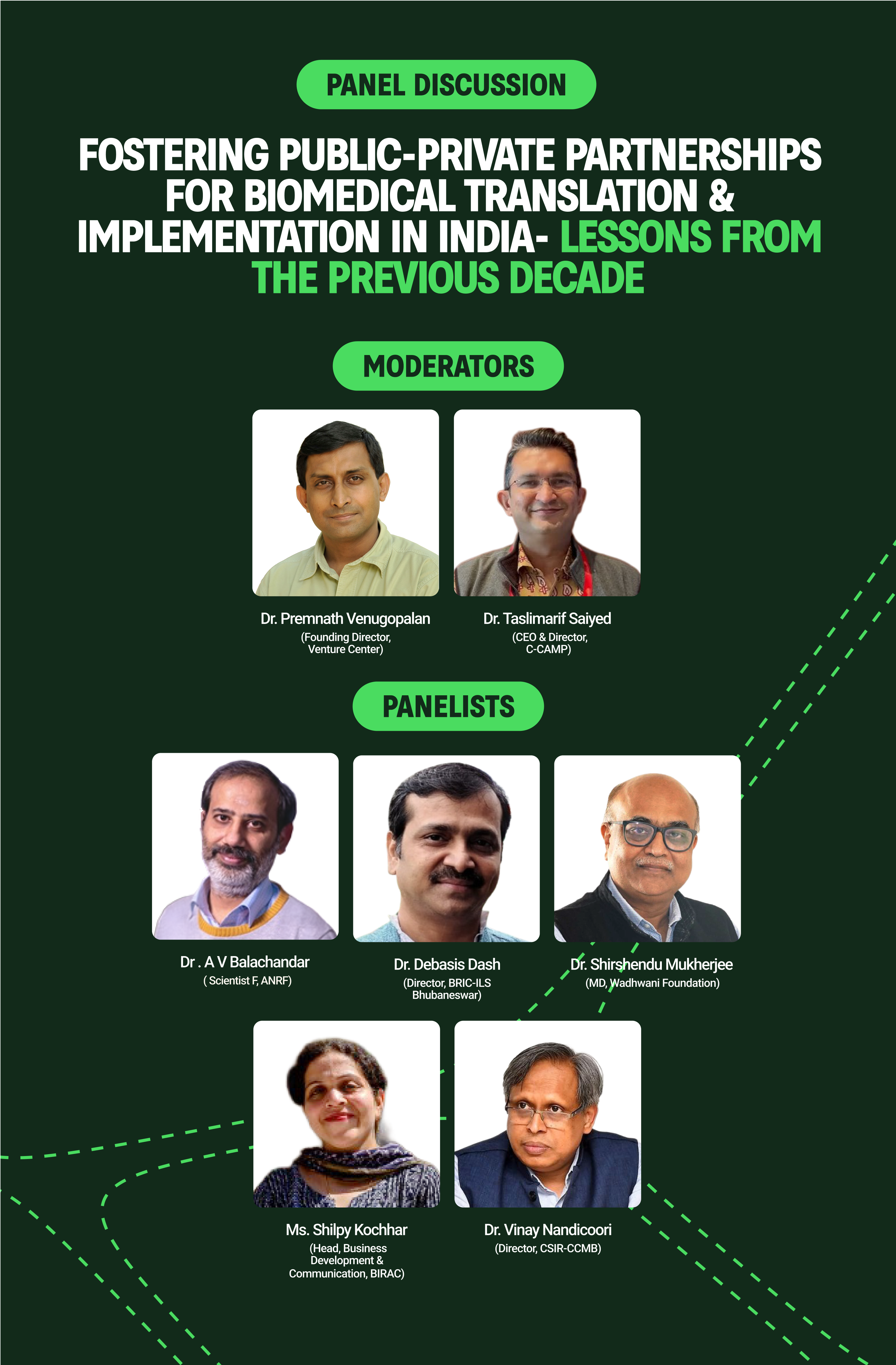


summary
India is producing world-class science, but the mechanisms to translate discoveries into impactful products and therapies remain fragmented. Conventional linear models of technology transfer often stall innovations in the “valley of death.” To move forward, partnerships must be integrated, trust-based, and multi-sectoral.Dr. Vinay Nandicoori reflected on the Covaxin development journey, noting that its rapid success hinged on early-stage collaboration between academia, government, and industry. He emphasized that public institutions can deliver when there is flexibility, shared accountability, and leadership committed to translational outcomes.Ms. Shilpy Kochhar highlighted BIRAC’s role in creating an enabling ecosystem, from incubators to specialized consortia. She proposed reframing partnerships as PPPP – Public, Private, Philanthropy Partnerships – where philanthropic capital plays a catalytic role in de-risking early innovation, bridging funding gaps, and sustaining capacity-building efforts. Dr. Shirshendu Mukherjee reinforced this, stressing that philanthropy is not just a funder but also a capacity builder. He showcased initiatives like the planned 100 innovation hubs designed to nurture translational projects across the country, arguing that scaling such models can permanently strengthen India’s biomedical pipeline. Dr. A. V. Balachandar described hybrid funding approaches, where government and industry co-invest in programs, with philanthropy adding long-term resilience. He emphasized moving away from project-by-project support to programmatic, mission-driven partnerships that can sustain innovation cycles from concept to implementation.Dr. Debashish Dash added a critical perspective, cautioning against overreliance on government-led structures. He argued that private-led execution, supported by public infrastructure and early-stage government funding, offers more agility and efficiency. In his view, government’s most valuable role is in early de-risking and late-stage adoption (through procurement and integration into public health systems).
Throughout the discussion, the importance of trust, leadership, and institutional agility was repeatedly emphasized. The panel agreed that India must develop context-specific PPP models rather than importing Western templates. Whether through hybrid funding, philanthropic partnerships, or government-enabled adoption, the goal is clear: to create an innovation ecosystem that is fast, flexible, and equitable, capable of delivering healthcare solutions at scale.
Key takeaways
• PPPs must evolve into PPPPs
• A recurring theme was the critical role of philanthropy in bridging funding and capability gaps, making a strong case to move from PPP to PPPP frameworks.
• Early engagement is critical
• Successful public-private partnerships must begin early in the innovation lifecycle, with co-development replacing linear tech transfer models.
• Trust and leadership drive success
• Effective PPPs rely on mutual trust, shared values, and open-minded leaders willing to collaborate across institutional boundaries.
• Diversity in models is essential
• There is no one-size-fits-all — PPP models must be flexible, context-driven, and capable of adapting to varied translational challenges.
• Government as enabler and adopter
• The government must play a dual role — as an early-stage enabler (infrastructure, de-risking) and late-stage adopter (public health implementation).
• Bridging the “valley of death”
• Structured efforts like Wadhwani’s Innovation Hubs are crucial to supporting translation from academic discovery to viable products.
• Need for program-level collaboration
• Stakeholders should move beyond project-by-project funding to programmatic co-investments, enabling scale, continuity, and systemic impact.
• Agility and structural reforms are needed
• For PPPs to succeed, there must be reform in funding flexibility, hiring norms, and operational autonomy, especially in public institutions.
• Public infrastructure + private agility = optimal mix
• A sustainable model may involve government-funded infrastructure and private sector agility and execution, ensuring long-term success.
.png)
